Basic flower arrangement techniques
Secondly, flower arrangement is a comprehensive art that employs gardening, fine arts, sculpture, literature and other humanistic arts.
Flower arrangement is also a skill that can be used to serve the family and society. Finally, flower arrangement is a cultural activity that is easy for the public to accept and can be explained in simple terms.
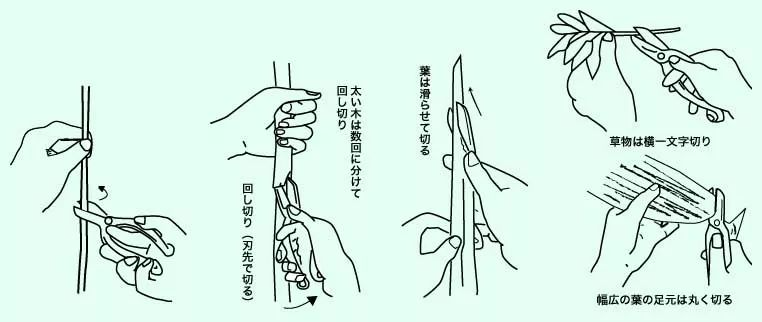
First of all, the tools for picking and pruning should not be underestimated. Fern shears are one of the essential tools. They are named after the curled shape of the shears on the back that looks like a fern. The flower stand should be painted with white wood lacquer. Needless to say, the sword mountain has long nails about 1 cm high sticking out from the slightly heavy lead blocks, which are used to fix the branches. They are long, square, and round in shape to suit different flower plants. In addition, saws, hammers, knives and other sharp tools are also commonly used. Whether it is a small piece or a large one, fierce tools such as electric drills and electric saws will also appear, completely losing the elegant associations brought by flowers.
When cutting different flowers, the parts of the scissors are used differently. Herbal flowers are generally cut flat with the head of the scissors, woody flowers are cut obliquely in the middle, and thin wires are cut at the root. (As shown above)

Ikenobo cutting hand method
Hold one side of the scissors with the base of your thumb and hold the other side with the other four fingers. Pass your index finger through the middle to make it easier to hold and your hand is less likely to be pinched.
How to care for Ikenobo shears
First, remove the dirt on the blade. Wet the bundled mugwort with water and wipe both sides of the blade. If mugwort is not available, cloth will work, but mugwort is best for removing the astringent liquid of plants.
After that, wipe off the moisture with a dry cloth, and then rub it with a cotton cloth soaked in engine oil. Do not use engine oil directly on the blade. Don't be bothered by the trouble. As long as you take good care of it every time, the blade will not be dull, and the iron scissors will be used with quality.
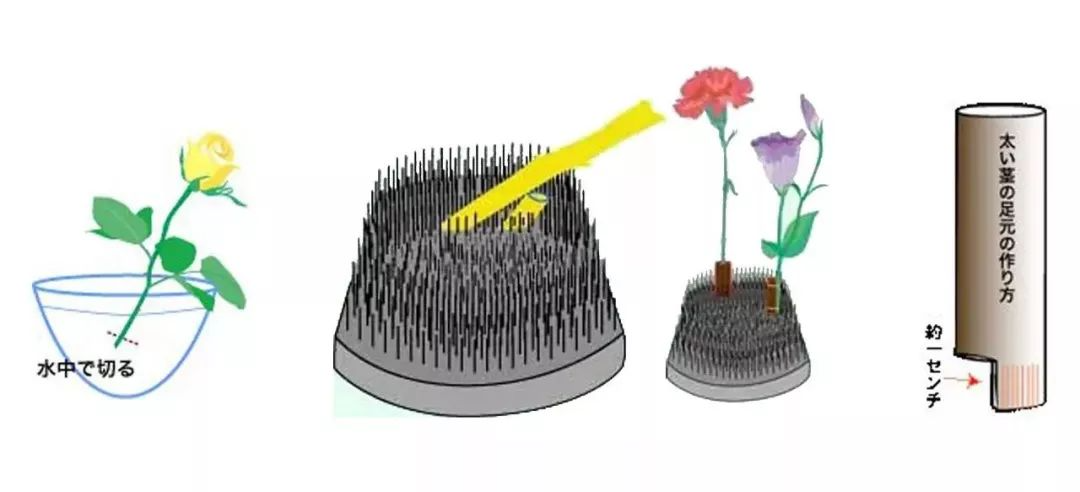
| Water drainage |
Maintaining the beauty of flowers is very important when cutting and pruning. Compared with the so-called scientific basis or theory, florists pay more attention to the experience of predecessors passed down by masters. The plants used in flower arrangement must contain enough water and stay fresh for as long as possible. People use many techniques, including "water cutting, water injection, water boiling, crushing, medicine", squeezing, steaming or burning the roots of flower stems, and applying various chemicals .
However, the most commonly used method is "water cutting" , which means cutting the roots of the flower stems in water before using them. In order to restore the vitality of withered flowers and leaves, they are generally trimmed in water, and the flower stems are soaked in water for more than 30 minutes to fully absorb water. According to the characteristics of different plants, they are cut in different time periods, either in the morning or in the evening. Some extreme people strictly control the temperature and humidity. If they are cut at an inappropriate time, the flowers will be awakened from hibernation, and their mood will definitely be unhappy. It can be seen that the eagerness of flower lovers is beyond ordinary people.
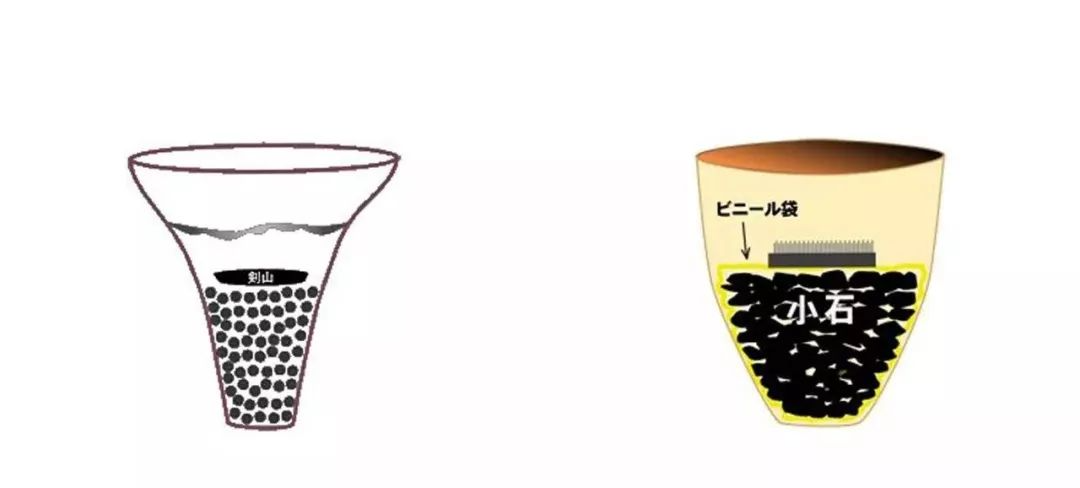
| How to fix flowers in Jianshan |
When you encounter thin flowers, you can cut a piece of branch that is of suitable thickness and easy to insert, tie them together with transparent tape or thin wire, and insert them into the sword mountain.
Coarse and hard flowers are difficult to insert into the needles of the sword mountain, and it is also difficult to fix on the sword mountain. We need to use different techniques to process flowers according to different situations. If you encounter relatively thick flowers, if they are herbal, use scissors to cut the incision into an inclined surface.
For woody flowers, cut the longitudinal incisions into "cross", "rice" or "well" shapes. Insert these gaps into the needles of the sword mountain to make it easy to fix them.
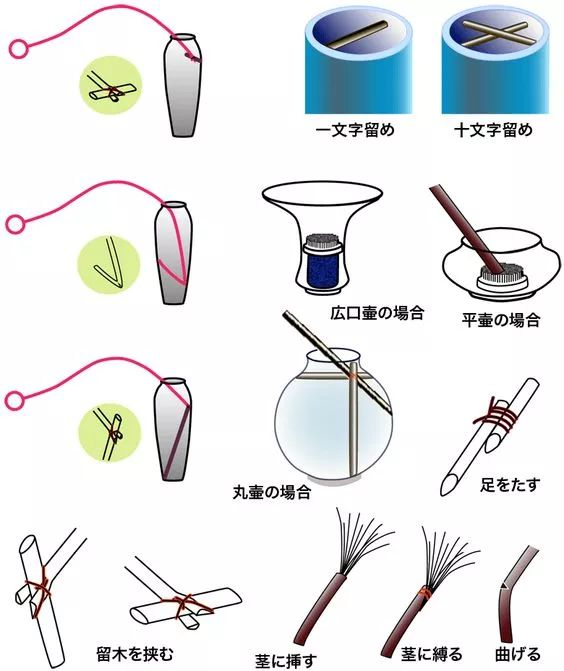
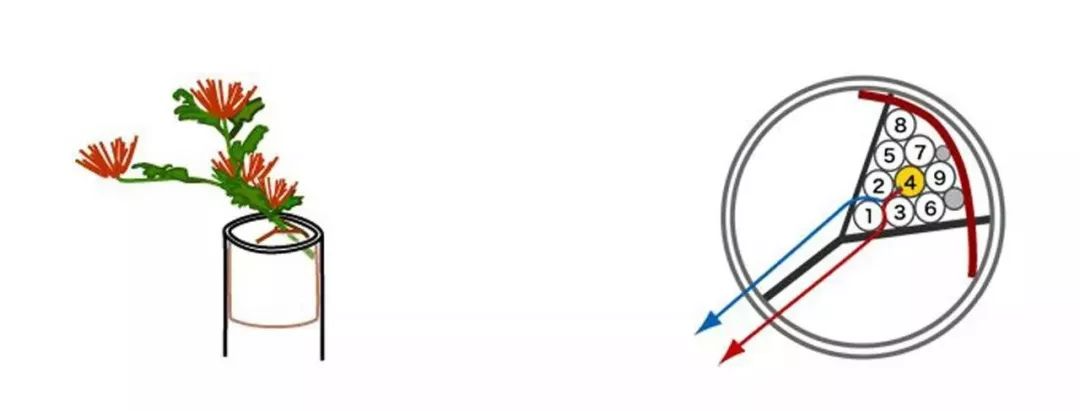
| Sprinkle |
"Sa" is actually a small wooden stick, but because it is used in flower arrangement to fix flower branches, "Sa" has become a special name.
If the work is small and does not require many flowers, you only need to do a "one-line scattering" method. Oriental flower arrangement technique: one-line scattering. Use a branch across the mouth of the vase to fix the flowers. In this way, the branches are inserted on one side and cross each other, which makes it easier to fix. The other side of the vase mouth is left open, and the whole work becomes clear.
The "cross" shaped sha is made by crossing two wooden sticks and fixing them with ropes into a cross shape and putting them into the mouth of a vase for flower arrangement. In traditional flower arrangement, there are also "well" shaped sha and "Y" shaped sha.
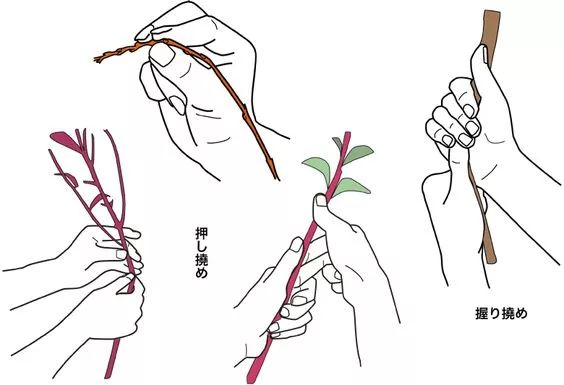
| Leaf Processing |
Correction method using fingertips
The stems of chrysanthemum, orchid, and duruo are relatively soft. Hold the flower stems with both hands until the tips of your thumbs feel like they are being strangled by the stems, and then begin to bend the stems.
The technique of "scratching"
The literal meaning is to bend the branches and stems of plants, but in the case of flowers, it also means to straighten the originally bent flowers. So it is more accurate to say that "nao" is a way of trimming and correcting the flowers according to the posture you want. Therefore, the meaning here becomes correction or embellishment.
Twist and turn correction method
This technique is to break the tissue of the part you want to bend, making it easier to bend. Sometimes you just want to make some small changes in leaves and branches, such as when you want the leaves to change direction, you twist the leaves with both hands. For branches, you first cut them with scissors and then twist them.